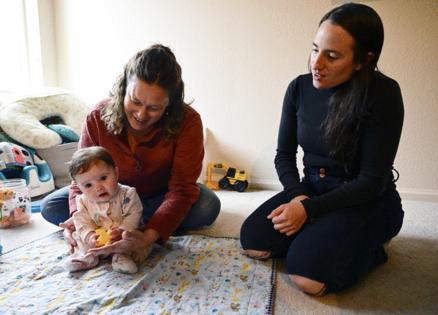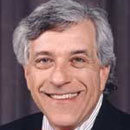Colorado mom undergoes rare half-birth surgery to save baby's life
Published in Women
DENVER — When the anesthesiologist put Angelica Vance under for her cesarean section, she had no way of knowing what she’d encounter when she woke.
If everything went perfectly, the baby would be on a ventilator, and the doctors would have a plan to remove the growth that was impairing her daughter’s breathing. If things went wrong, Vance might be recovering from severe bleeding, while a machine pumped blood through her daughter Chloe’s body.
“If ECMO didn’t work, she wouldn’t make it,” Vance said of the blood-pumping machine. “That morning was intense.”
Vance, of Fort Collins, said her third pregnancy had progressed relatively normally until the final trimester, when pain and a jump in the circumference of her belly pointed to an excessive buildup of amniotic fluid.
Her doctor removed two liters of fluid and kept her for further testing, because an increase that fast usually points to a bigger problem, she said. An ultrasound and MRI found a growth in the baby’s chest and neck, which kept her from swallowing amniotic fluid and would prevent Chloe from taking her first breath.
While a baby is inside and supported by the placenta, breathing isn’t a concern, because the mother supplies oxygen through the umbilical cord, said Dr. Chris Derderian, a pediatric and fetal surgeon who treated Vance and Chloe at Children’s Hospital Colorado.
Once the placenta detaches from the uterine wall, the baby needs to breathe on their own, giving a relatively tight window to open the airway, he said.
Derderian offered Vance an ex-utero intrapartum treatment, or EXIT, procedure, during which he would partially deliver Chloe via cesarean section, and a team would work to open her airway while she remained attached to her mother.
The procedure is relatively risky because the anesthesiologist has to give medication to relax the uterus, preventing the placenta from tearing loose, but increasing the odds of serious bleeding.
Children’s performs only about one EXIT procedure each year, in cases where the baby has no other options, but has a good enough chance of survival that the hospital can give the family a choice whether to accept the risks, he said.
After Vance went under general anesthesia on Oct. 15, Derderian and his team delivered Chloe’s head and shoulders by cesarean section. That started a clock of about 90 minutes that the placenta could act as life support.
About 40 people from various specialties crowded into the room in case they needed to handle possible complications, including a cardiac surgeon who could open the baby’s chest if the growth put too much pressure on her lungs.
The airway was about the width of the tip of a pen, so the emergency medical technicians inserting the breathing tube had to use one that would push back against the pressure from the growth, Derderian said.
At that point, they had no way of knowing whether the airway was open, however slightly, through its full length or was completely closed at some point. If it was closed, they’d have to cut a hole in her neck to insert the tube.
And then, in about 15 minutes, the worst was over. The tube went down; Chloe turned pink as the ventilator pushed oxygen into her body. Some of the specialists dispersed, while others took Chloe to the neonatal intensive care unit or sewed up Vance and prepared for her to wake.
“I don’t think we have got a better scenario,” Derderian said.
When Vance woke up, she learned the hospital had planned another surgery to remove the growth once Chloe was three days old.
That also went better than she feared, taking about two hours instead of the six that the doctors projected, she said. The growth wasn’t cancerous, and it hadn’t wrapped too tightly around her daughter’s airway, making removal easier.
Chloe spent about 10 days on a ventilator before transitioning to less-invasive oxygen support, Vance said.
After six weeks in the neonatal intensive care unit, she went home without oxygen, though she did need a feeding tube because of difficulty swallowing, she said. Fetuses essentially practice breathing and swallowing during the third trimester, and the mass around her neck limited that preparation.
Now, Chloe is relatively healthy, though she still receives therapy every day to work on her swallowing and to build up her neck muscles, Vance said. She said she wanted to speak about her experience because she’d never heard of a mother who went through the same thing — and, at the beginning, their family’s future looked bleak.
“It feels like playing a lot of catch-up, but she has come a long way,” Vance said. “It helps you to see something positive.”
©2025 MediaNews Group, Inc. Visit at denverpost.com. Distributed by Tribune Content Agency, LLC.
























Comments